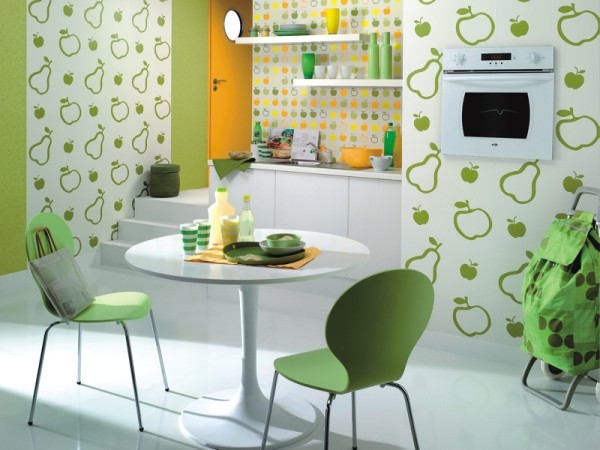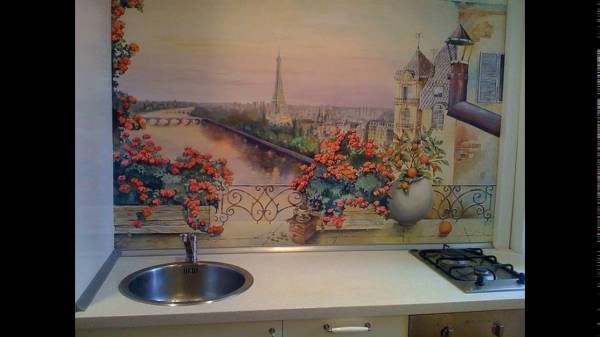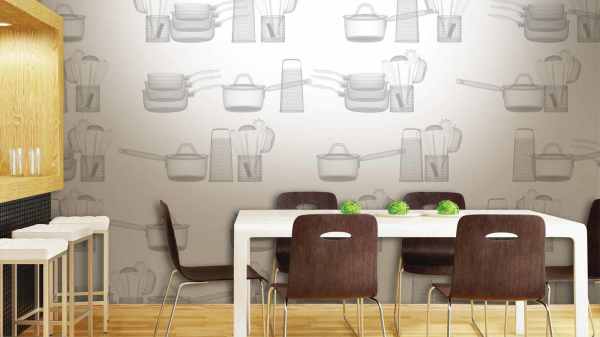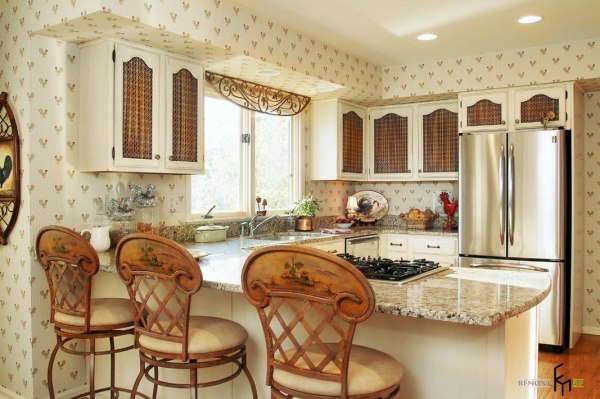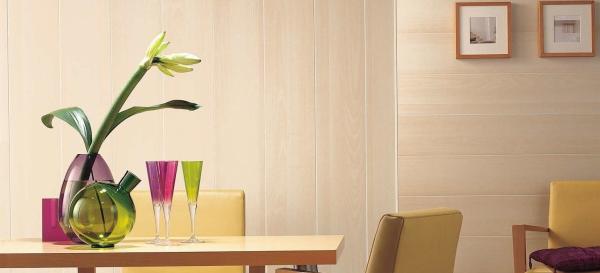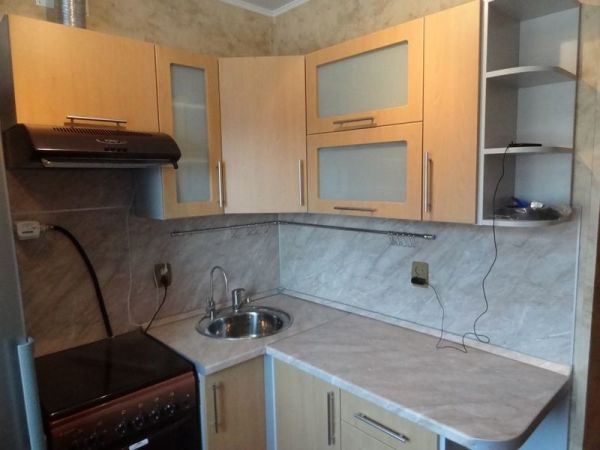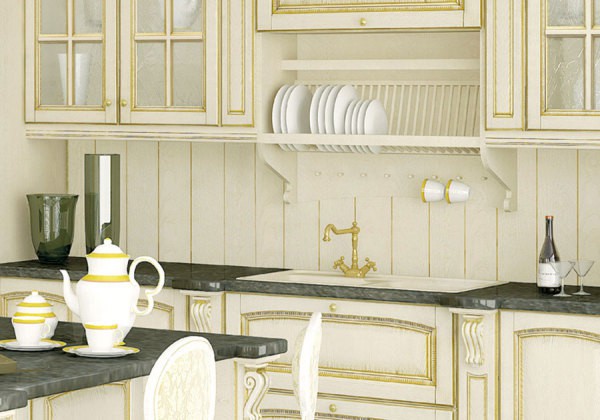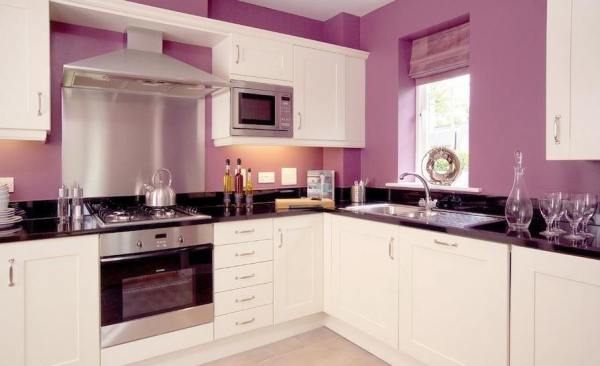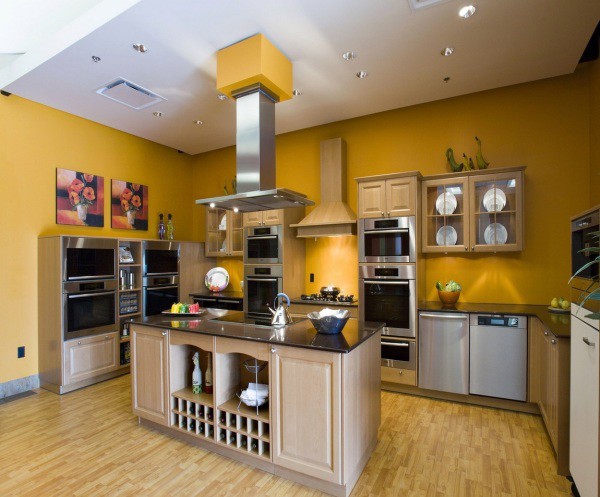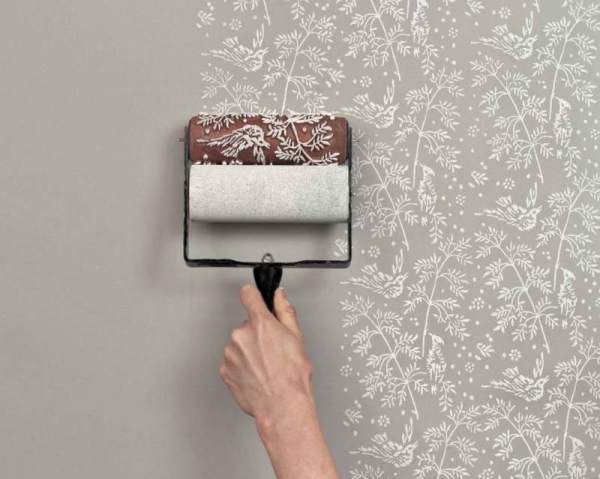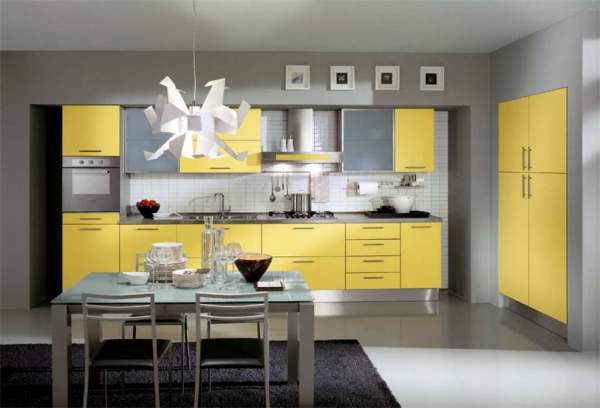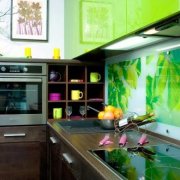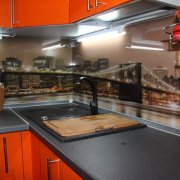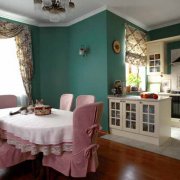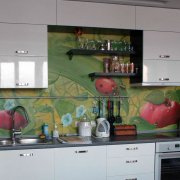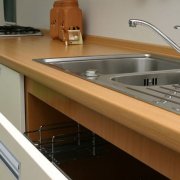How to decorate walls in the kitchen: a review of materials
When planning repairs in an apartment or house, the question inevitably arises of how to decorate the walls in the kitchen. It is believed that this is one of the most difficult rooms for which the finishing materials used in the living room or bedroom are not suitable.
We also asked this question, and decided to make out the most popular and affordable options for wall decoration in the kitchen, some of which you can see in the photo or video in this article.
The content of the article
What you need to know about kitchen decoration
Even if your kitchen is equipped with the most modern and powerful equipment, the aggressive environment from it will not go anywhere. Here, and constant humidity caused by frequent changes in temperature, and the variety of smells of cooked food, which inevitably remain on the walls.
Choosing what to finish the walls of the kitchen, you need to consider a number of factors, and that is why, it is considered a difficult room for repair. Fortunately, progress does not stand still, and on the construction market, almost every day new materials appear that successfully withstand all negative influences, but you need to combine business with pleasure, and in addition to quality characteristics, the repair must also meet aesthetic requirements.
The task is not easy, but actually quite feasible, and further we will talk about the most popular finishing materials (seeMaterials for decorating the kitchen: choose the best option) Of course, it is not possible to mention all the possible options for wall decoration in the kitchen within the framework of one article, therefore we will focus on the price category, because for many, this factor becomes the determining factor when choosing building and finishing materials.
Wallpaper in the kitchen
What could be more familiar and more familiar than wallpaper? For the older generation, the only alternative was to paint, and such a repair could not be called original, but you always want something new and unique.
Modern wallpaper is not the kind of paper that was glued to the walls before, new technologies and production methods have appeared, thanks to which the coating can not only be wiped with a slightly damp cloth, but also thoroughly washed with detergents, and this is very important for the kitchen. Indeed, even if the most prudent and accurate housewife is working on it, pollution and odors cannot be avoided, and it can be very, very difficult to eliminate them without the use of chemistry.
The choice of modern wallpaper is huge, they are made from a variety of materials, and even combine to achieve maximum quality characteristics. But not all of them are suitable for the kitchen. So how do you make the right choice?
Let's look at the most relevant examples of wall decoration in the kitchen using wallpaper:
- Vinyl wallpapers. We intend to start our list with them, because, choosing the better to finish the walls in the kitchen, vinyl is the most preferred material. Such wallpapers can be safely washed and they do not absorb odors at all. Moreover, the dense structure of vinyl wallpaper allows them to finish even working walls, that is, those that are close to the stove.
- Non-woven wallpaper. Fabric wallpapers are less preferable for the kitchen, as they are not very resistant to moisture and odors. Fortunately, modern manufacturers have taken care of this, and released special vinyl-based wallpapers that have a denser structure, and they can already be wiped and cleaned.
- Cork Wallpaper. Wallpaper based on wood bark is especially popular among people who appreciate their naturalness in decorative materials. The cork easily tolerates water procedures, and is resistant to temperature changes, and its relatively disadvantage can be considered a relatively high price.
- Metallized wallpaper. Such a coating is not at all afraid of anything, and if it were not for the high price, they could be given the title of the best finishing material for aggressive rooms. Metal wallpaper is easy to wash, and resistant to chemical solvents, which allows you to remove even the most serious contaminants from their surface.
- Liquid wallpaper. The cheapest and easiest finish. By themselves, liquid wallpaper is a very weak coating, they are afraid of water, and quickly accumulate foreign odors, but some finishers go to the trick, and cover them with an additional layer of varnish, which completely changes their quality characteristics.
Important! If, choosing materials for wall decoration in the kitchen, you prefer vinyl wallpaper, be sure to look for a coating with microperforation. Such wallpaper contains holes invisible to the eye that make the coating breathable, that is, allow it to release steam from condensation under the surface.
As you can see, the choice of wallpaper is very extensive, and they all fit for repair well in the kitchen. All of them have their own set of positive and negative qualities, and the choice depends on the capabilities of your budget and personal preferences.
Many people value their naturalness in wallpaper, so they prefer those options in the production of which synthetic substances were not used, but remember that one hundred completely natural coatings are very weak, and they require especially careful care. In this case, one should not be afraid of the word synthetics, as it is designed to make life easier, and makes materials more stable and durable.
If we talk about any recommendations, then we would recommend using vinyl, since it doesn’t worry at all, and does not require additional protective coatings. Such decoration will last for many years, and most importantly, will not lose its decorative qualities over time.
Advice! Vinyl wallpapers are a very heavy material, so their gluing method is somewhat different from how simple paper wallpapers are glued. Here the glue needs to be applied not only to the canvas itself, but also to the wall.
Wall panels in the kitchen
Choosing what material to finish the walls in the kitchen, along with the wallpaper you can put wall panels. The concept is very generalized and includes a number of materials combined by the method of their installation.
All wall panels are installed on a special crate and are interconnected using the groove-comb technology. The main advantage here is the convenience of restoration if necessary, since you have to change only one or several segments, and at the same time do not redo the entire repair in the room.
Advice! Installing wall panels with your own hands is very simple, and for this you do not need to have experience in construction or repair work. Detailed instructions are described on our website, and after reading it, you can safely get down to business.
MDF
Modern material based on wood chips and natural glue. MDF panels have a dense base and a decorative surface on which a large-scale printing and pressing method is applied to apply a texture pattern imitating wood, stone, or other natural materials.
The main disadvantage of this material is its low resistance to mechanical damage. Its surface is easily scratched, and it is almost impossible to repair the damage. The only trick is to disguise it with a permanent marker that matches the color scheme.
But there is a significant plus, which is the low price. Repair made using mdf panels will cost a little more than gluing wallpaper, and if you take expensive metallized or cork wallpaper, it’s even cheaper. As for the care of panels, it is better for the kitchen to choose a special moisture-resistant MDF marked with a drop symbol on the package.
PVC
PVC, or polyvinyl chloride, is a synthetic material that resembles plastic and has similar technical characteristics. Understanding how to decorate the walls in the kitchen, pvc panels can be safely called the ideal choice.
They are not afraid of water and chemical detergents, do not deform over time and do not lose their decorative qualities, and most importantly, they are very cheap. Yes, this is the cheapest way to make repairs, and also the most durable. What can happen to plastic? Almost nothing.
Of the minuses, a low aesthetic component stands out, since, despite the fact that a pattern is applied to the surface of the panels, they still look like plastic, and can not compete in attractiveness even with MDF-based panels.
Advice! Before you finish the wall in the kitchen, take care of its protection. Plastic creates a vapor-tight barrier, and over time it can develop into mold or fungus, so the surface of the wall must be treated with primers or impregnations of deep penetration.
Wooden lining
What mistress does not dream of a kitchen trimmed with natural wood? In such rooms there is always a special atmosphere of warmth and comfort. You don’t want to run away from such a kitchen as soon as possible, and it motivates you for new culinary exploits and achievements.
Of course, it’s hard to argue with the beauty of natural wood, but you can’t forget about the quality aspects, but they are just the ones that suffer from the lining. The fact is that the tree does not tolerate contacts with water, and absorbs it into itself, while being deformed and losing its original shape.
Smells are no less a problem in this situation, and if the lining is soaked with them, removing them will not work. The only protection method in this situation is an additional coating with a layer of impregnation and varnish.
Impregnation will protect the material from the formation of mold, and transparent varnish will retain the shape of the panel and prevent odors from absorbing. Unfortunately, vapor permeability and environmental friendliness can be forgotten, but the external attractiveness will not only not disappear after such a treatment, but also stand out.
Painting
Some 30 years ago, people had no choice at all how to finish the walls in the kitchen, on the shelves of construction stores, in addition to paper wallpaper, there was only oil paint with the marking PF-115, and water-dispersed whitewashing.
Neither one nor the other material comes close to the definition - ideal. Oil paint tightly closes the walls and prevents steam and condensate from escaping to the surface, and dispersion whitewashing quickly loses its appearance, and besides, it is easily washed off with water.
Fortunately, today the times have changed, and now even paint falls under the definition of the types of wall decoration in the kitchen. The quality has increased markedly, and the range has increased tenfold. But in all this diversity it has become very easy to get confused, especially if you do not encounter painting work every day.
Paints differ not only in color and method of application, but also in the main binder component, and its qualitative characteristics, as well as stability and durability, directly depend on this.
So:
- Acrylic. Paint based on natural resins and water dispersion. Easy to clean and can come in contact with any surface. Acrylic paints are one of the most common, and in many respects their price plays a role here, which is several times lower than that of competitors.
- Alkyd. Synthetic paint with excellent quality characteristics. It belongs to the category of washable paints, and easily transfers contacts with potent detergents based on chemistry.
- Silicate. Paint, in which the main binder component is liquid glass. It has high vapor permeability, and adhesion to any surface. Silicate paint is not afraid of any effects, and can last even a dozen years, even without proper surface care.
- Silicone. Synthetic paint based on natural rubber. Its main advantage can be considered durability and stability, but there is a significant minus, namely, silicone paint does not have vapor permeability.
As you can see, the choice of paints is very wide, and they are all suitable for repairs in the kitchen. Here the choice entirely depends on your financial capabilities. If your budget has strict limits, acrylic based material is best.
Such paint adheres perfectly to the surface and is easy to clean. If there are no budgetary restrictions, then silicate paint will be an ideal choice, and you will forget about repairing in the kitchen for many years.
And in conclusion
Well, here we’ve figured out how to finish the walls in the kitchen, and perhaps this article did not answer the most pressing question - which of all the materials listed is better and better, but we did not set ourselves such a goal.
Everyone chooses what he likes, and you can find advantages and disadvantages even from the most expensive and high-quality material on the market.
